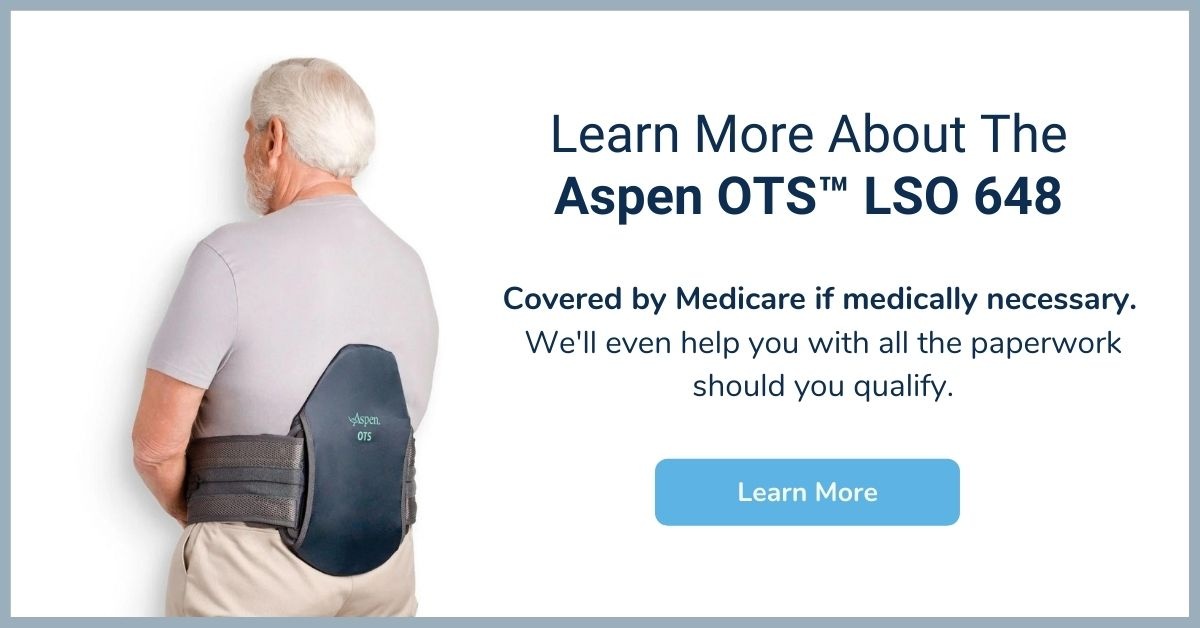Do You Want to Avoid or Delay Spinal Decompression Surgery?
If you have been diagnosed with spinal stenosis, your physician may suggest spinal decompression surgery, also known as laminectomy surgery. There are many reasons that a patient would try to avoid or delay the surgery. Though complications are rare, there are other factors to consider:
- For several weeks after surgery, there will be activity restrictions.
- A pain management regimen that includes medication and physical therapy will be prescribed.
- To reduce the chance of blood clots, compression stockings are often recommended.
- The patient must be diligent with incision care.
- Many patients delay surgery with pain-management and nonsurgical treatments.
Medication
Medications to manage swelling, inflammation, and pain are usually prescribed by the surgeon. Predominantly, those medications are by prescription, however efforts to avoid patient dependence have convinced some doctors to recommend over-the-counter medication. Deciding factors for prescription vs. over-the-counter (OTC) include severity of pain, age, prior prescription history, and patient mobility.
Nonsteroidal Anti-Inflammatory Drugs
Nonsteroidal anti-inflammatory drugs, known as NSAIDs, relieve pain, reduce inflammation, and reduce fever. NSAIDs are found in over-the-counter meds, such as ibuprofen, aspirin, and naproxen, in varying strength/dosage. If OTC NSAIDs are not effective at relieving pain your doctor can prescribe higher strength/dosage.
Corticosteroids
Corticosteroids are anti-inflammatory medications that reduce swelling and inflammation. Corticosteroids are generally prescribed for a limited number of days, after which your doctor will determine further treatment. Occasionally, an injection is preferred and indicated, dependent on the level of inflammation and patient characteristics; usually performed as outpatient with little recovery time.
Neuroleptics
Neuroleptics help stabilize overactive neurons inside the spinal cord. Many people report relief in a few days. Neuroleptics must be prescribed, generally for a short duration, after which your physician will determine their success.
Physical Therapy
Successful physical therapy can delay surgery. Physical therapy can modify posture sufficient to reduce compression of spinal nerves and reduce pain. Caution should be taken because backward-bending (extension) exercises risk furthering nerve impingement on the nerve and make the condition worse or keep re-aggravating the condition.
Core Strengthening
Physical therapists are trained to assist in strengthening core musculature as a treatment to spinal issues, which in turn, supports the spine. Exercise will may make you stronger and more stable; however, strengthening does not address the cause(s) of stenosis.
Alternatives
Alternatives to physical therapy, often recommended by doctors and physical therapists are commonly known as integrative therapies, including heat, ice, massage, acupuncture, and meditation. These therapies may improve your overall well-being but may not be effective in pain reduction.
Lumbar Bracing
Lumbar braces reduces pressure on the lower spine and limits micro-motions and exaggerated motions that may aggravate the condition. Because the cause of spinal stenosis is nerve root irritation, bracing relieves pain by shifting the patient’s weight and posture. Spinal stenosis accompanies aging and often results with the natural wear and tear of the spine. The spine becomes unstable over time from deterioration and moves into an unnatural position threatening to 'pinch' the nerve (nerve-impingement) and result in radiating (“shooting”) pain. Bracing assists the body to maintain a neutral position where less pressure is exerted on the nerves and discs, reducing pain.
If you have been diagnosed with Spinal Stenosis and want to delay or avoid surgery, contact us so that we can recommend a brace that will help relieve your pain and get you active and pain free again.
Written by Elite Medical Supply of NY
Braces and Products Covered by Medicare
Browse ProductsRecent Posts
- Spinal Decompression at Home: What It Is, How It Works, and Whether It’s Right for You
- Manage Osteoarthritis Progression With a Quality Knee Brace
- Product Highlight: Aspen Active™ P-TLSO
- Understanding Radiculopathy: Causes, Symptoms, & Treatment Options
- Alternatives to Back Surgery: What you Should Know
Topics
- Back Braces (39)
- Knee Braces (31)
- Medicare Beneficiaries (31)
- Pain (24)
- Non-Opioid (22)
- Medical Providers (19)
- Lower back pain (11)
- Product Highlight (11)
- Sciatica (11)
- Muscle Spasms (9)
- Decompression (8)
- Lumbago (8)
- Degenerative disc disease (6)
- Lumbar Spinal Stenosis (6)
- Spinal Stenosis (6)
- Working with your doctor (6)
- Fracture healing (5)
- Herniated Nucleus Pulposus (5)
- Bulging or herniated disc (4)
- Quadratus Lumborum Syndrome (4)
- SI Joint (4)
- SI Joint Dysfunction (4)
- Spondylolysis (4)
- Wrist Pain (4)
- Bone Growth Stimulator Therapy (3)
- Bone Growth Stimulators (3)
- Carpal Tunnel Syndrome (3)
- Neuromuscular Electrical Stimulation (NMES) (3)
- Unicompartmental Osteoarthritis (OA) (3)
- Wrist Brace (3)
- wrist tendinitis (3)
- Braces for Golf (2)
- Electrical Stimulation (2)
- Failed Spinal Fusion Syndrome (2)
- Kyphosis (2)
- Lumbar compression fractures (2)
- Radiculopathy (2)
- Spondylolisthesis (2)
- Supine Cervical Traction (2)
- Total Knee Replacement (2)
- Wrist Braces (2)
- Ambulatory Cervical Traction (1)
- Arthritis (1)
- Braces for skiing (1)
- Cervical Traction (1)
- De Quervain Syndrome (1)
- Digital DME Orders (1)
- Knee Brace Accessory (1)
- Knee Suspension Wrap (1)
- Knee brace support for skiing (1)
- Medicare Scam (1)
- Muscle Atrophy (1)
- PCL (1)
- Patellofemoral Pain Syndrome (1)
- TLSO (1)
- Ulnar Tendinitis (1)

